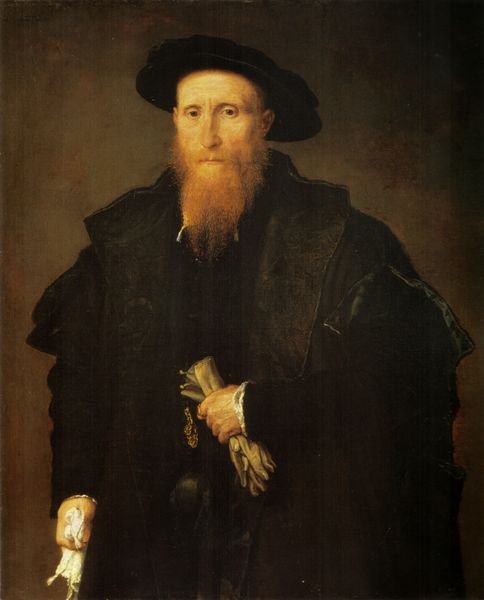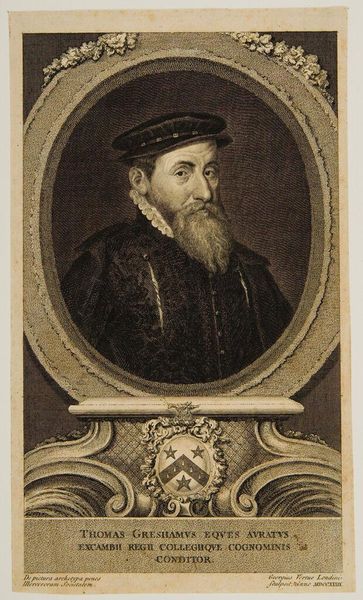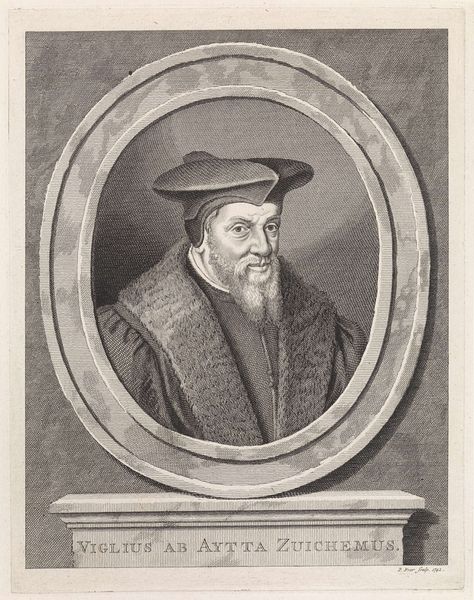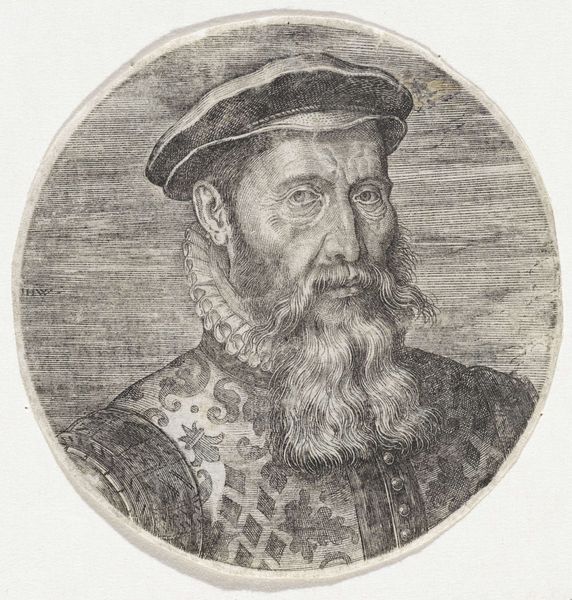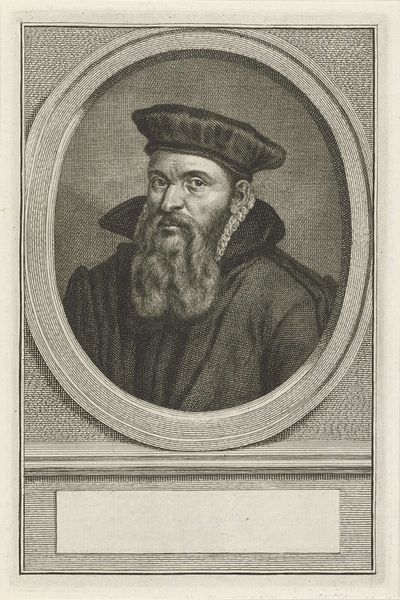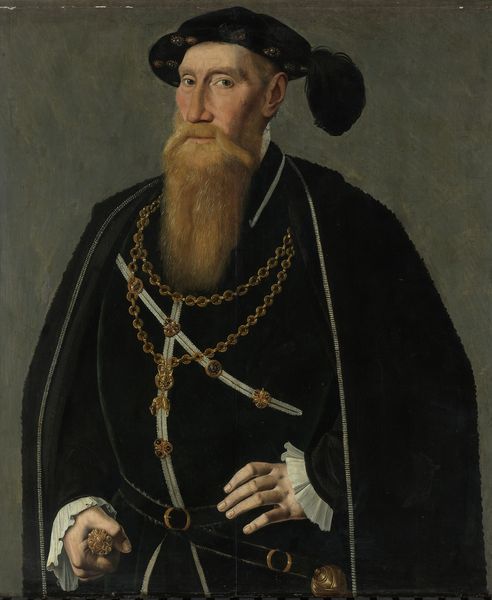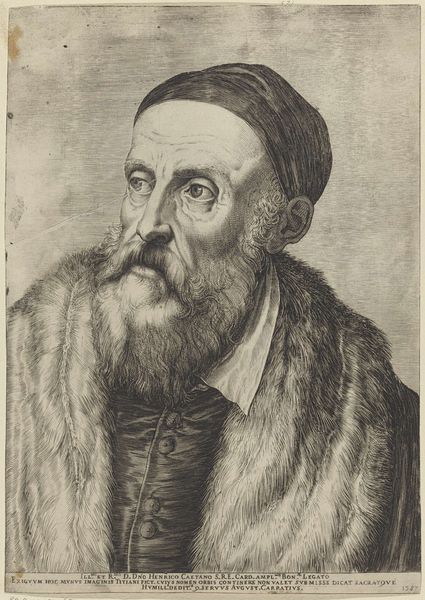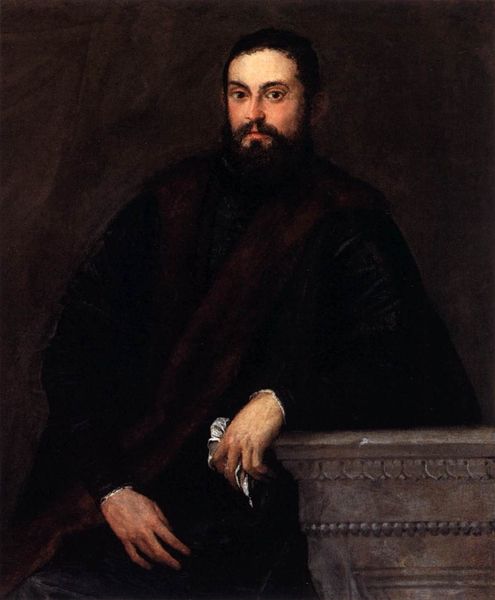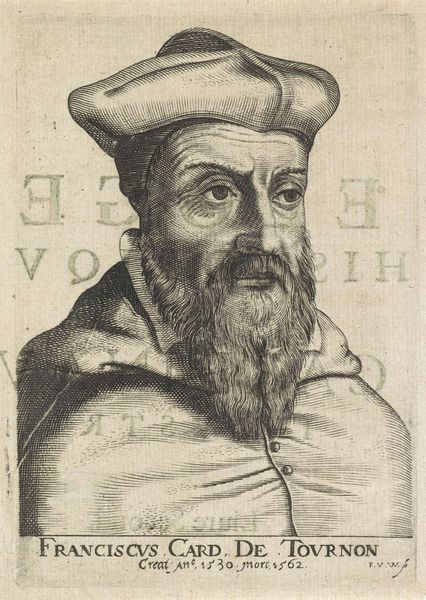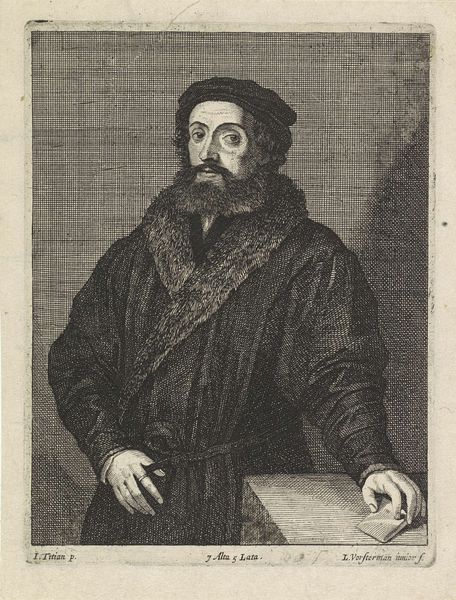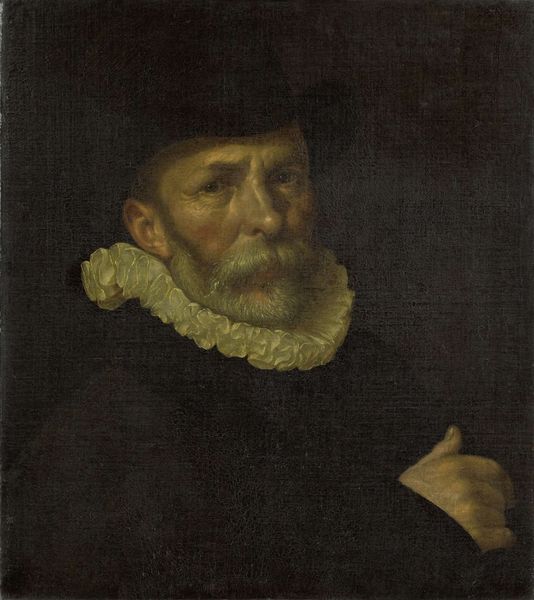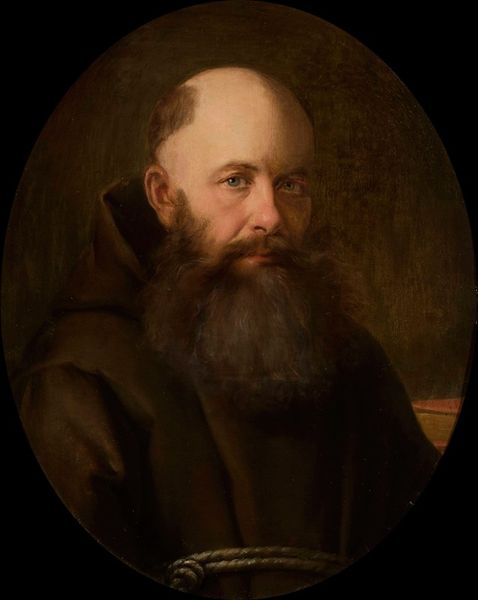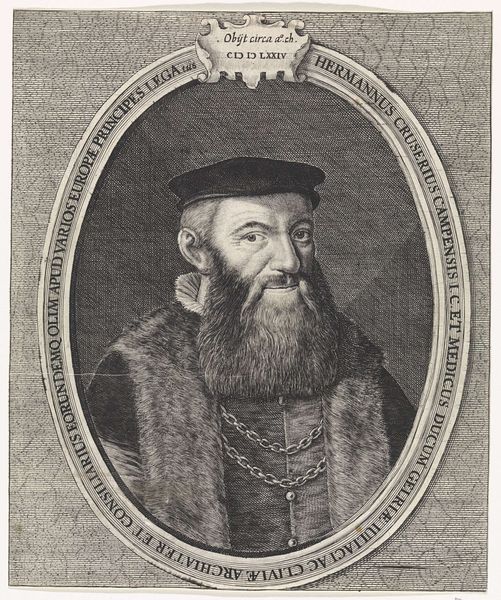
oil-paint
#
portrait
#
portrait
#
oil-paint
#
11_renaissance
#
italian-renaissance
Dimensions: 55.2 x 44.5 cm
Copyright: Public domain
Editor: Here we have Lorenzo Lotto’s “Bust of a Bearded Man,” painted in 1541 using oil paint. It's struck me how starkly the gold chain contrasts with the otherwise dark palette. What stands out to you? Curator: Beyond the striking visual contrast, I'm drawn to the materiality of this piece. Consider the oil paint, meticulously layered to create texture. Lotto wasn't just representing a man; he was engaging with the economic realities of pigment acquisition and display within 16th-century Venice. Editor: Economic realities? Could you elaborate on that? Curator: Oil paints, and particularly certain pigments, were luxury goods. The vibrancy and longevity they offered spoke to the patron’s ability to command certain materials. How does that knowledge shift your reading of the portrait? Editor: It definitely adds a layer I hadn’t considered. Suddenly the darkness feels less like a stylistic choice and more a statement of wealth, highlighting the chain by minimizing the expense elsewhere. It shifts the emphasis. Do you see any reflection on the labor of its creation here, perhaps through Lotto's technique? Curator: Absolutely. Look closely at the beard. Each strand is rendered with distinct brushstrokes, evidencing meticulous labor. Lotto deliberately showcases his mastery, which becomes part of the value exchange within the artistic marketplace of the time. Editor: So, the act of making becomes part of the portrait's meaning. It seems that Lotto is reflecting not just his subject, but also the circumstances that enabled its production. Thank you for drawing my attention to this aspect of art! Curator: And thank you for being such an engaged interlocutor.
Comments
No comments
Be the first to comment and join the conversation on the ultimate creative platform.
